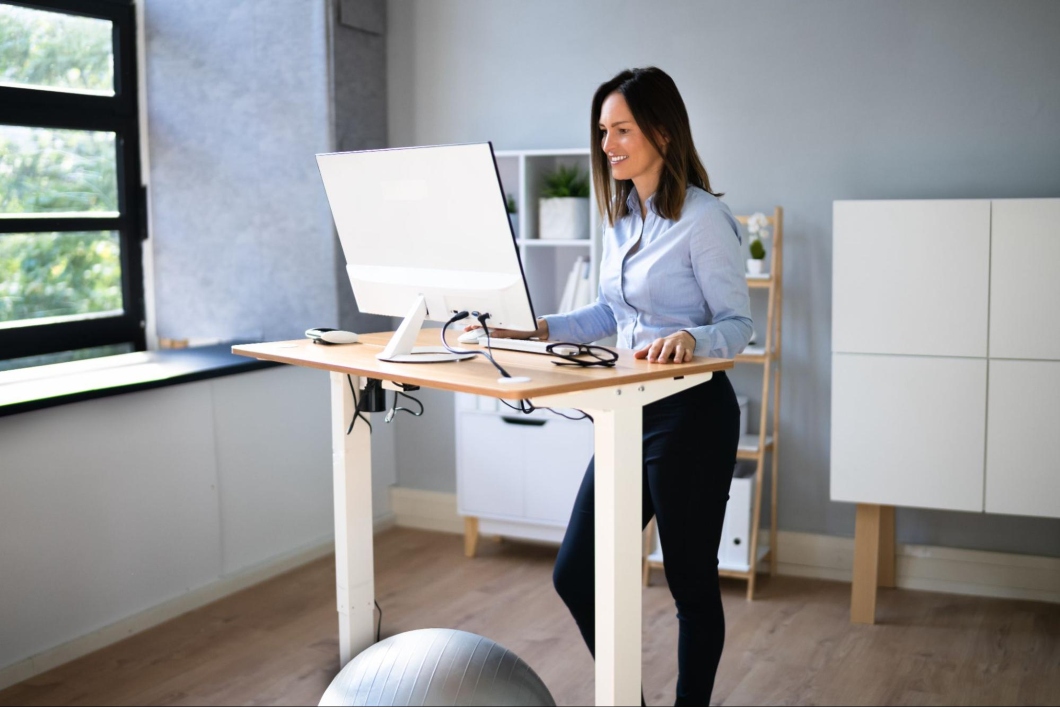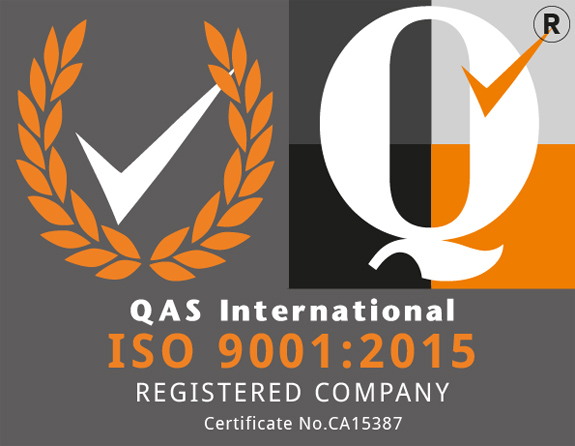
Anyone with a desk job will tell you that sitting for extended periods could be better for our bodies. Jobs that involve sitting for hours have been linked to various health problems, including poor posture, back pain, obesity, and cardiovascular disease. Fortunately, there's a simple – and effective – answer: a standing desk. In this post, we'll explore how best to use a standing desk and the best practices for incorporating it – and some additional movement – into your workday. So whether you're a full-time remote worker or just looking for a healthier way to work, this guide will help you maximise the benefits of your standing desk.
When you start using a standing desk, setting it up correctly is essential to get the full benefit immediately. If you’ve never used one, adjust the desk to the correct height, ensuring your monitor is at eye level and your elbows are at a 90-degree angle.
If your desk is too low, you'll find yourself hunching over, leading to neck and shoulder pain. But, if it's too high, you'll be forced to strain your arms and wrists, leading to discomfort and potential injuries. Take the time to find the perfect height for your desk, and adjust it when necessary.
Together with adjusting your desk height, using an anti-fatigue mat can be an excellent investment. Standing for extended periods will put a strain on your feet, legs, and back and an anti-fatigue mat provides a cushioned surface to stand on, reducing the impact on your joints and muscles. It can also stimulate blood flow by encouraging small, constant movements, helping you stay active and engaged throughout the day.
Maintaining a good posture is easier said than done, but it’s crucial to avoiding pain and strain on your body. Always stand upright with your shoulders back and your weight evenly distributed on both feet. Avoid leaning on one foot, as this can cause muscle imbalance leading to pain in your back, hips, or legs.
If you're new to standing desks, it may take a while to adjust to standing for longer, but in time, you’ll develop good posture habits that will benefit you in the long run. Using ergonomic accessories can also help reduce strain on your body. A monitor stand can reduce neck and shoulder strain, while an adjustable keyboard tray can prevent wrist and forearm pain.
Combining proper posture with different ergonomic accessories will create a comfortable and healthy work environment that works for you and supports your physical well-being.
Regular breaks are essential for your mental and physical health and well-being, whether standing up or sitting down to work. Standing at your desk for prolonged periods can lead to physical discomfort, so taking short breaks every 30-60 minutes will allow you to rest and recharge.
But it also gives you a chance to step away from work for a short time and focus on something else, so you give your brain and eyes a rest too. During these breaks, try to move around and do simple stretching exercises like shoulder rolls, neck stretches, and arm circles. This movement will help relieve tension in your upper body.
Together with taking regular breaks, try and incorporate movement into your day as much as you can. Obviously, those stretches we mentioned are a good start, but ideally, try and get outside for a walk – even if it’s a quick 10 minutes around the block.
Stretching your hamstrings and calves can help get your lower body moving correctly, and regular movement like this helps increase blood flow and energy levels. If you can't get out, use the stairs to give yourself a mini-workout. Any exercise will help reduce the risk of chronic diseases such as obesity and cardiovascular disease.
Even anti-fatigue mats and flooring can help promote movement when you’re standing, whatever sector or industry you work in.
Listening to your body is crucial when using a standing desk, no matter how long you’ve been using one. It's essential to recognise any signs of tiredness or discomfort – this can be one of the best lessons on how to best use a standing desk. So make changes when you need to if you start to feel pain or discomfort in your legs, back, or neck. If you do, take a break or adjust the height of your standing desk.
Experiment with different break intervals to find what works best for you, whether standing for 30 minutes and sitting for 30 minutes or standing for an hour and sitting for 30 minutes. Everyone's body is different – what works for one person may not work for you. So by listening to your body and adjusting your routine, you can ensure you're using your standing desk safely and comfortably.
Using your standing desk for 30-60 minutes at a time is recommended. It’s also a good idea to alternate between your standing desk and a sitting desk throughout the day, using 1 hour for standing for every 1-2 hours sitting.
Yes, standing for long periods can intensify foot pain. But this can be relieved by using an anti-fatigue mat under your desk or by wearing proper shoes or trainers with good arch support – avoid wearing high heels!
Switching between standing and sitting when working is recommended, as both positions have benefits and drawbacks. Too much sitting can lead to a sedentary lifestyle, while too much standing can cause fatigue and discomfort.
Yes, using a standing desk with an under-desk treadmill is possible, allowing you to walk and work simultaneously for an active workday, even if you don't have time to leave your desk!
Yes, just like a sitting desk, it's important to adjust your computer monitor to the correct height when using a standing desk to avoid neck and eye strain. Use an adjustable monitor stand so your monitor is at eye level without tilting your head up or down.
Whether you’re new to standing desks or an experienced user who needs to lose some bad habits, this guide will explain how best to use a standing desk to keep you active, productive, and healthy while you work. But you can always boost the effectiveness of a standing desk by investing in a good, comfortable anti-fatigue mat from Mats Direct.
For more information on our range of anti-fatigue mats and flooring for your staff, contact MatsDirect UK. Our team can advise you on sizes and styles for various industries and sectors. We can even discuss branding options! So send us a message, email us at sales@matsdirect.co.uk or call us on 0161 797 6785 today.

MatsDirect UK Ltd is fully ISO 9001:2015 (Quality Management System) accredited, which means we have demonstrated our ability to consistently provide products to the industry’s highest quality and standards.
Now, how’s that for peace of mind?

Website designed by Highpoint Media
